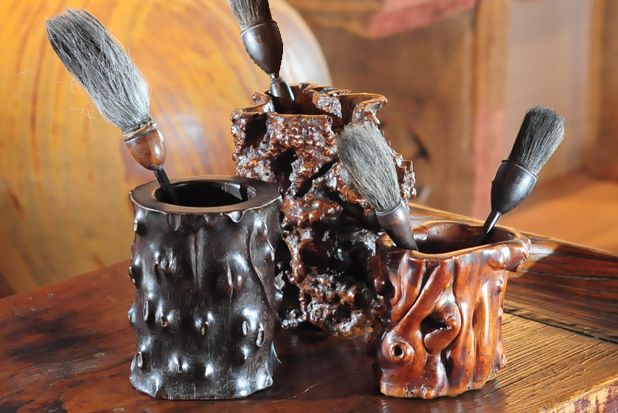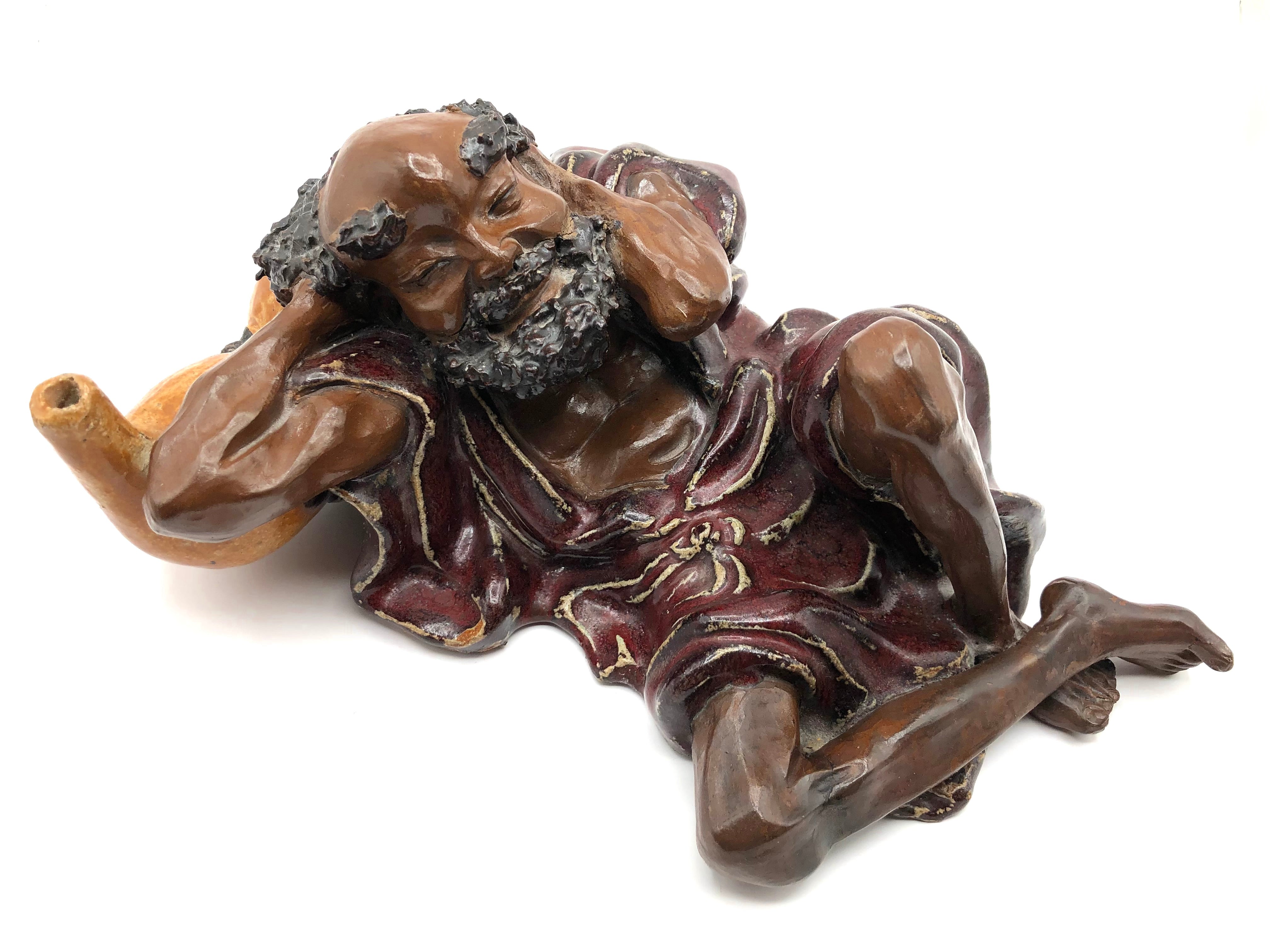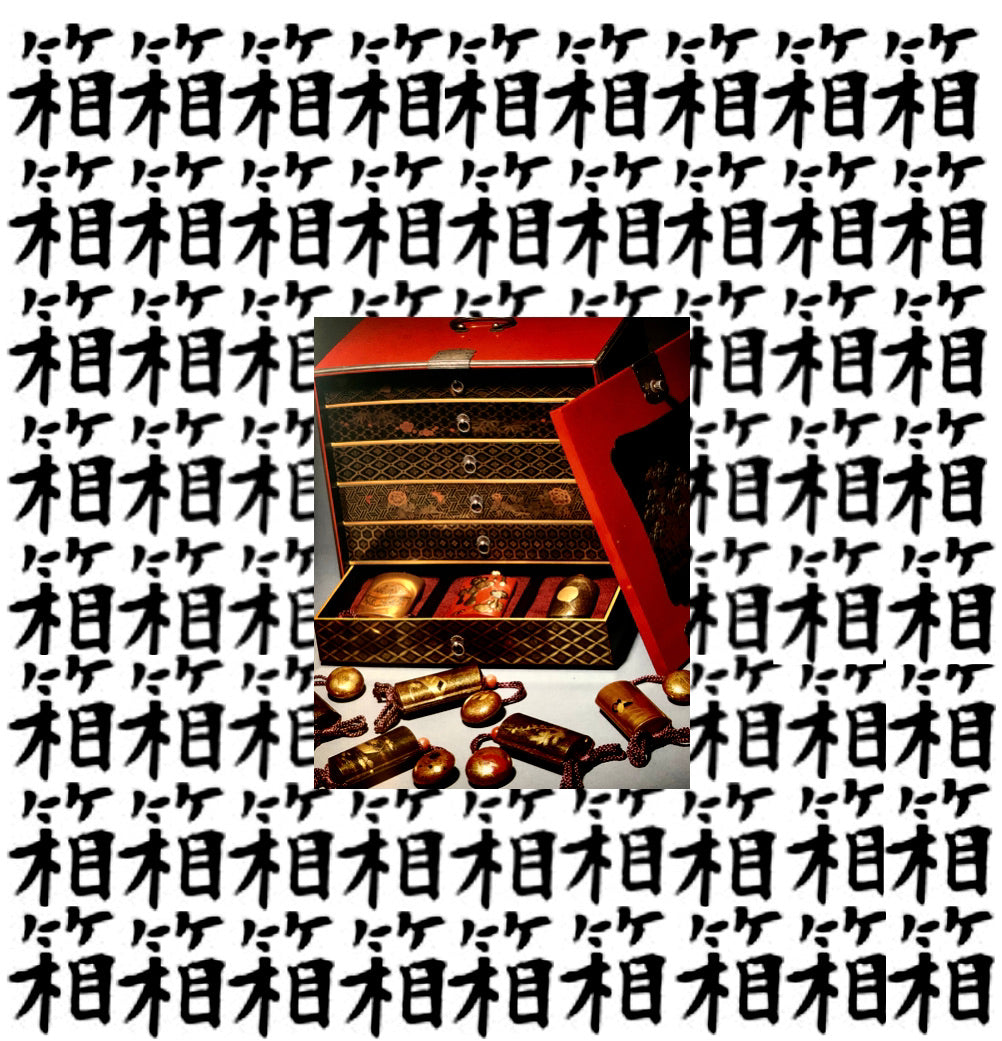Historically, most of the Japanese scholars, who were highly educated male calligraphers, practiced the art of ink painting, an early form of brush painting that only used black ink in different concentrations to produce fine quality art work. In Japan, the art is called Suibokuga or Sumi-e.
Japanese Calligraphy Containers and Arts Media
On the scholar’s table, one would typically see a brush pot, (Burashipotto), which is a cylindrical container for holding brushes. These are typically carved from bamboo, or made of pottery, porcelain, ivory, jade, or metal with ornate motifs symbolizing concepts such as longevity. The original shape of the brush washer was a lotus leaf or flower, and symbolized roots of the lotus plant as it grows in mud with beautiful flowers emerging on the water surface, clean, and untarnished; so a brush would similarly emerge from the brush washer clean, and ready to create.
Sumi-e painting involved shading and tonality, and was created in different ways; either by varying the density of the ink through pressure of the brushstroke, or by changing the ink load, and or by diluting the ink with water. A master in the technique could produce several tonal variations in a single stroke. In some cases, this required all sizes and density of brushes, although an accomplished artist could produce one painting using only one brush, with only the control of the pressure on the paper surface. The brush pot soon became an important tool along with he brush washer bowl.

The numerous brushes would be rinsed and stored in a brush pot with their handles down, so that the bundles of hair would keep their shapes and points. The brush, can be simply utilitarian, or can be quite decorative, with all forms of materials and sizes, and is an important tool to the scholar. The brushes used in Sumi-e are made from natural materials of the finest quality. The brush handle is made from bamboo, while close to 10 different types of wild animal hairs are used in combination for the bristles, including rabbit, wolf, badger, horse, and deer. Each type of hair absorbs and responds to the ink distinctively. A Sumi-e brush may look simple, but it is a very elegant and perfectly balanced art instrument. With it, the artist could engage in calligraphy, landscapes and still life painting.

The necessary tools used in Sumi-e include the “Suzuri” or “inkstone”, which is created from the slate found in ancient riverbeds and quarries. The Suzuri Inkstone is an ingeniously carved and smooth flat, surface on which to grind the ink stick into powder. The sticks, which look like small black bricks, are made mainly of soot and animal glue, sometimes with incense or medicinal scents added. To make ink, the ink stick is ground against an inkstone with a small quantity of water to produce a dark liquid, which is then applied with an ink brush. Sumi inks of the highest quality are those that come from the pine trees growing on the mountainsides of Suzuka and Nara.
The most important part of an ink stone is the flat surface, which must have the right hardness and texture. If an ink stone is too rough it can damage the very delicate hairs of the brush, because the artist uses the surface of the ink stone to bring the tip of the brush into the right shape, or to remove the excess ink. An ink stone can be round or rectangular; its shape makes no difference for the grinding, but during the 18th century, artists began to appreciate decorative stones in combination with a functional surface. Japan has several natural stones that are suitable for superior ink stones for their calligraphy artists.

Tenkoku Carving Seals refers to the authentication of Japanese paintings or calligraphy, and Tenkoku is the signature and seal imprinted by the artist on the work. Historically, at the end of a calligraphy or the bottom corner of a painting, the artist would write their name, pseudonym, court rank, and/or date of completion, and sealed it with their Tenkoku. Artists and calligraphers may use one or several seals to sign their work. These seals many contain the artist’s real name in full or in part, or their artistic pseudonym. Other exotic scripts meant particularly for seal carving are generically called Zattaisho and include scripts of varying form. Tenkoku impressions are also used by connoisseurs, who have purchased an antique artifact.

And finally, Sumi-e artists paint using Japanese paper or “Washi”. Washi creation is based on weather conditions and seasons. The fibers of rice, Kozo, or paper mulberry, or plants that are indigenous to Japan like Mitsumata, (Oriental Paperbush), and Gampi, are used for Washi. They come in different types of absorbencies that correspond to different brush strokes because Western-made papers are not as absorbent, and are generally thicker, with a sheen, thus they are never been used.




